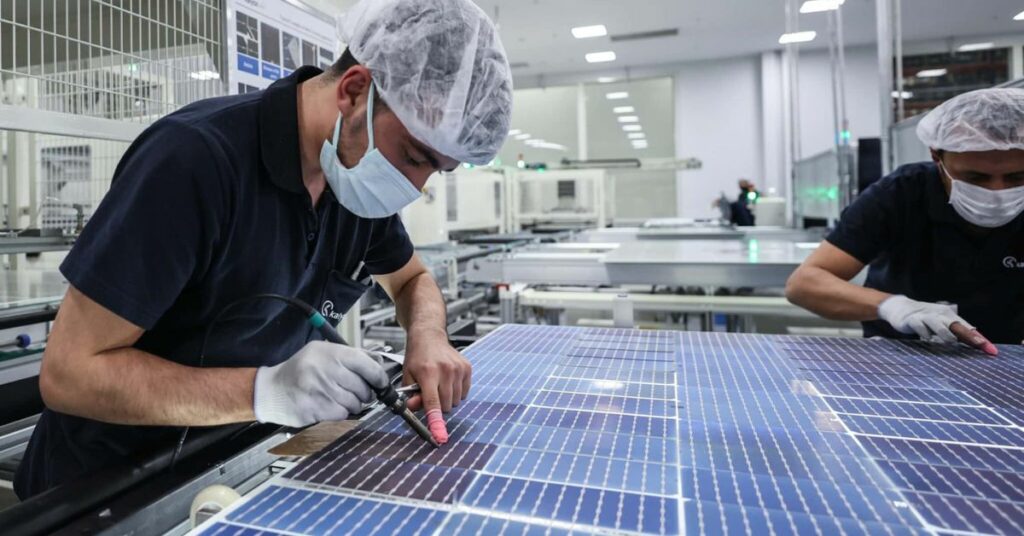Since the presence of carbon has been affecting the environment these days, people need to understand about the impact carbon footprint of solar panels.
The need for diversity and sustainability has become fundamental, and people can now access different renewable energy sources.
So, in this blog, we will discuss the concept of carbon footprints, dive deep into what they are, how they effect the environment, and explore whether solar panels are carbon neutral.
Moreover, Advanced Solar Solutions has become a beacon of hope for people in these developmental times.
You can utilize transformative solutions to ensure minor strains and reduce negative environmental impact since rooftop solar emits electricity 12 times less when generated by gas plants and 20 times less when generated by coal.
It validates the requirement for an environment free from carbon footprints that may pose harm.
Solar Panels in the Present Era
Solar panels have revolutionized the world and provided people with a unique approach to saving their energy costs and opting for a better option that may provide them with plenty of benefits.
From increasing the value of your property to saving money in the long run through incorporation, solar panels give you the leverage to cut costs from anywhere possible.
If you are struggling with energy costs and need help figuring out how to manage them, solar panels will help. Even with minimal sunlight, they will provide electricity even when the solar power grid goes off and in varying climates through integration.
Regarding the carbon footprint of solar panels, this technology has turned out to be one of the best innovations in history to save the environment.
Diving Deep in the Concept of Carbon Footprint of Solar Panels
Before proceeding, you must be well aware of the impact of solar panels on the environment. Solar panels are considered eco-friendly technologies that does not emit greenhouse gases or pollutants when they operate.
Thus, they minimize the carbon footprint of solar panels, which is the ultimate need.
In addition, the carbon footprint includes various steps in delivering the solar panel, from manufacturing to transportation and installation.
However, the solar panels’ ability to offset emissions while they operate sets them apart from other energy generators. It paves the way for a better, cleaner, and greener environment.
Do Solar Panels Reduce Carbon Footprint?
If we answer this precisely, the answer is “Yes,” but knowing this answer is not enough. You must know the science behind it. A solar panel takes in the sun’s energy, one of the finest and cleanest energy resources.
The best part is that it does not emit greenhouse gases while it operates, which reduces the harm.
Solar panels do not emit harmful gases and other pollutants unlike fossil fuels. They offer a clean alternative, making them a perfect choice for homes and businesses.
Hence, solar panels are crucial in keeping the environment healthy and green and reducing the carbon footprint to the maximum, making a switch to solar energy the best option.
How Much CO2 Is Saved with Solar Energy?
Solar energy has revitalized the world and given it a new direction due to its environmental benefits. Other electricity-generating materials release pounds of harmful CO2 into the atmosphere, and solar panels offset those emissions, ensuring a healthier environment. In addition, its impact is impressive when the power grid is integrated.
Solar installation on residential properties can offset around 100 tons of CO2 emissions if installed for 30 years, equivalent to planting more than 2,500 trees.
It can also be considered equivalent to removing 20 cars from the road each year, protecting the environment from fuel and other pollutants. Therefore, pounds of CO2 can be saved by installing solar energy.
Are Solar Panels Carbon Neutral?
Solar panels are considered a valuable choice for keeping the environment harm-free. Since they are carbon sinks, they offset harmful emissions by generating clean electricity.
Moreover, technological advancement and manufacturing processes have significantly shed light on how solar panels inched towards neutrality as they lost their footprints.
Therefore, solar panels are not carbon neutral, but they can become carbon neutral after 2 to 3 years. As soon as solar power grid lose their carbon footprint, they inch towards neutrality or positivity.
Meanwhile, one of the best things about solar panels is that they do not emit carbon dioxide or other harmful greenhouse gases when operating. Instead, they generate electricity from sunlight.
Striving for a Sustainable Future and a Better Tomorrow
Solar panels have been common for decades, and their installation has become an emerging trend these days. However, with their installation comes the impact of carbon footprints that have a massive effect on the environment.
Unlike other fossil fuels, solar panels do not emit harmful greenhouse gases and other pollutants, which makes them one of the recommended options for households and businesses.
It is said that every action counts, so opting for solar panels has been a significant step toward sustainability. It reduces the carbon footprint and even helps it inch towards neutrality or positivity, ensuring a productive environmental contribution.
If you want to contribute towards betterment and bring value to the environment from your side, opt for solar panels and make them your first choice.
Frequently Asked Questions
How Do Solar Panels Minimize Carbon Footprint?
Solar panels generate electricity from sun exposure which is a clean energy source. They do not release greenhouse gases when operating which helps in minimizing carbon footprint unlike fossil fuels which may either be coal, oil, or natural gas.
Which Factors Influence the Carbon Footprint of Solar Power Systems?
Manufacturing, installation, lifetime emissions, and energy mix are some of the several factors that influence the carbon footprint of solar power systems. These factors usually contribute the most to the carbon footprint of solar power systems.
How Can You Maximize the Sustainability Through Solar Power Systems?
You can maximize the sustainability of solar power systems by investing in highly functional solar panels, choosing trusted manufacturers and opting for local sourcing to minimize footprints to ensure sustainability.






